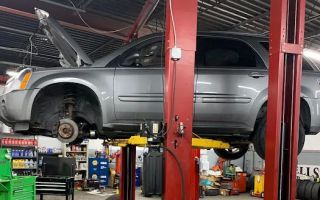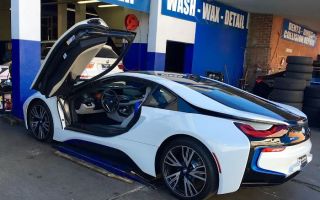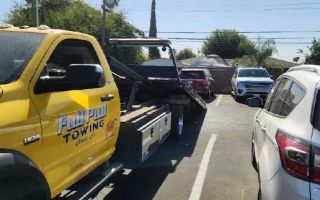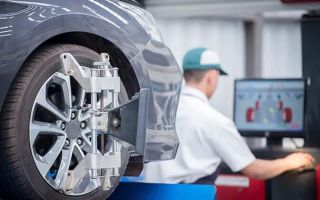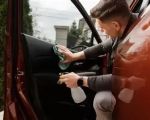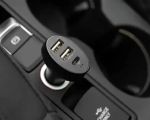- 1-Understanding-the-Risks-of-Roadkill-on-the-Road
- 2-How-to-Stay-Alert-and-React-Safely
- 3-Nighttime-Driving-and-Limited-Visibility
- 4-Vehicle-Damage-and-Cleanup-Considerations
- 5-Real-Stories-and-Common-Mistakes-on-the-Road
- 6-Expert-Advice-from-Rescue-and-Towing
1. Understanding the Risks of Roadkill on the Road
Roadkill is more than just an unpleasant sight — it’s a serious safety hazard for drivers. Whether it’s a deer, raccoon, or stray animal, hitting or swerving to avoid roadkill can lead to loss of control, tire damage, or even major collisions. Many drivers underestimate how suddenly animals appear on the road, especially on rural highways or wooded areas in North Carolina, Tennessee, and similar regions where wildlife is abundant.
Being aware of your surroundings and maintaining a safe speed are the first lines of defense. Roadkill accidents often occur when drivers overreact, braking too sharply or swerving into oncoming lanes. A calm, measured response can make all the difference between a near miss and a serious accident.

AJ's Auto Glass & Detailing
4404 S 84th St, Omaha, NE 68127, USA
2. How to Stay Alert and React Safely
2.1 Maintain proper scanning habits
Always keep your eyes moving, scanning the shoulders and median for signs of animals. At dusk and dawn — when wildlife is most active — use your high beams responsibly to detect movement ahead. If you spot an animal carcass or obstruction, slow down gradually instead of braking abruptly.

AJ's Auto Glass & Detailing
4404 S 84th St, Omaha, NE 68127, USA
2.2 Avoid sudden swerves
Swerving to avoid roadkill can be far more dangerous than driving over smaller debris. If it’s unavoidable, hold your steering wheel firmly and maintain a straight path to minimize vehicle instability. Larger animals, however, may require braking and maneuvering safely around the area.
2.3 Keep a safe following distance
Tailgating reduces reaction time. Give yourself at least three seconds of distance behind the vehicle ahead — more if you’re driving at night or on slippery roads. This extra time allows you to spot hazards early and react calmly.
3. Nighttime Driving and Limited Visibility
Most roadkill-related incidents happen at night, when animals are active and visibility is low. Turn on your headlights at least 30 minutes before sunset and keep your windshield clean to prevent glare. Avoid overdriving your headlights — if you can’t stop within the visible range, you’re driving too fast for conditions.
When driving through rural areas or wooded stretches, reduce your speed slightly. It’s easier to spot roadkill or live animals on the roadside when you’re not rushing. Many drivers find that using fog lights or LED beams enhances peripheral visibility, especially on dimly lit country roads.
4. Vehicle Damage and Cleanup Considerations
Hitting roadkill can cause significant damage to your vehicle’s undercarriage, tires, or front bumper. If you accidentally strike an animal, pull over in a safe spot to assess the situation. Avoid exiting your car on busy highways. Contact local authorities if the roadkill poses a danger to other drivers.
If your vehicle becomes unsafe to drive due to impact damage, contact professionals such as Rescue & Towing for immediate roadside assistance. Their trained technicians handle towing and cleanup efficiently, ensuring your safety and minimizing further risk on the roadway. Attempting to remove large roadkill yourself can be dangerous and is not recommended.
5. Real Stories and Common Mistakes on the Road
In one reported case from rural Virginia, a driver swerved to avoid a deer carcass at night, losing control and hitting a guardrail. Ironically, the car behind managed to brake steadily and avoid both the obstacle and the accident. This example illustrates a key truth — controlled reactions save lives.
Many drivers share similar experiences: the instinct to swerve feels natural but often leads to rollovers or head-on collisions. Taking a deep breath and staying in your lane is usually the safer move. Learning from such stories reinforces why understanding tips for safe driving around roadkill is essential for all motorists.
6. Expert Advice from Rescue & Towing
Professionals from Rescue & Towing recommend a proactive approach. Keep an emergency kit with reflective triangles, gloves, and a flashlight in your trunk. If you encounter roadkill blocking your lane, safely pull over, turn on your hazard lights, and call for roadside assistance. Avoid direct contact with animal remains, as they can carry bacteria or attract predators.
Remember, defensive driving doesn’t just protect your car — it safeguards everyone on the road. By staying calm, alert, and prepared, you can prevent accidents and handle unexpected hazards confidently. For dependable help in emergencies, Rescue & Towing is always ready to keep you moving safely.

